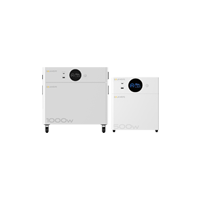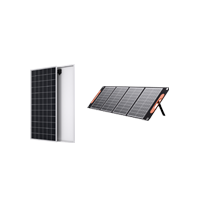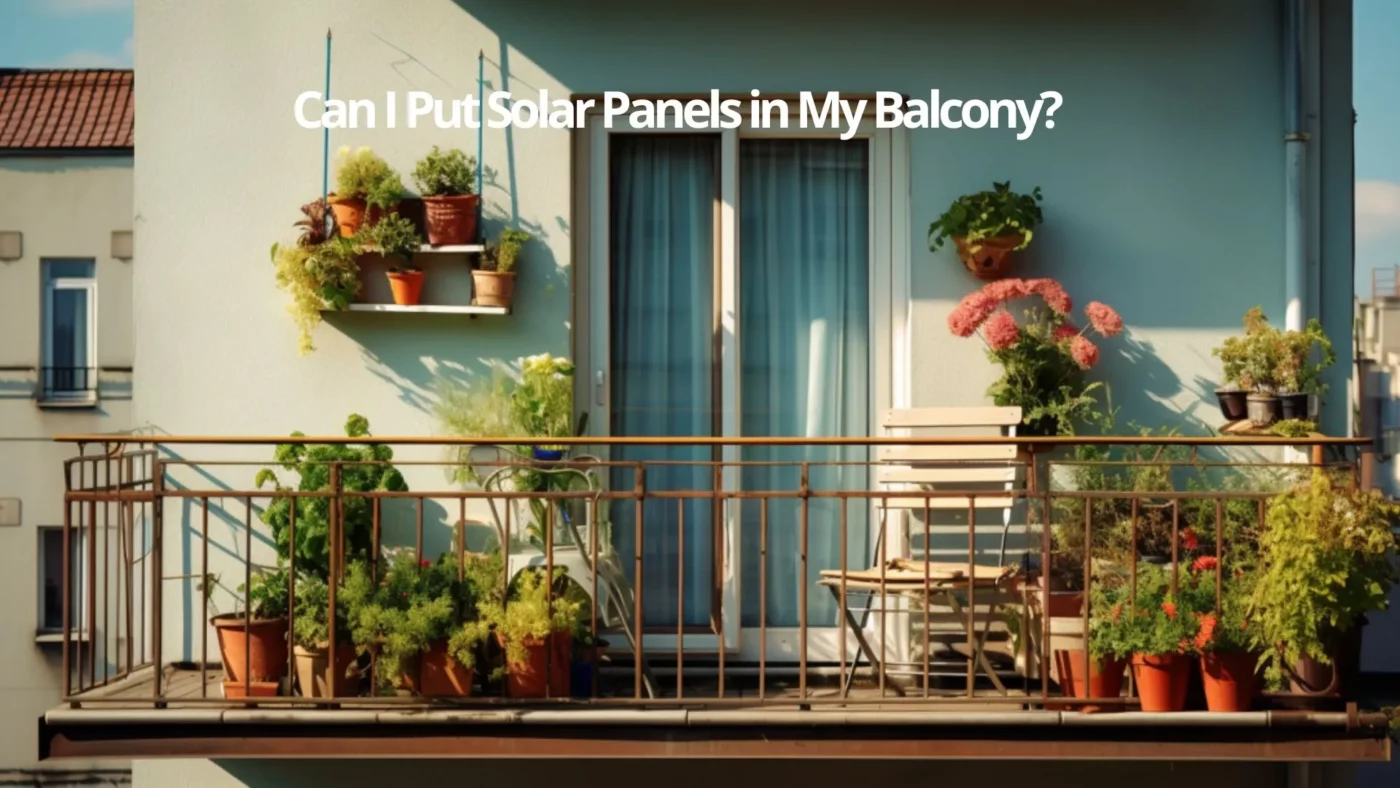Uncategorized
Can I Put Solar Panels on My Balcony? Exploring the Feasibility
Introduction
In recent years, solar energy has gained significant popularity as a sustainable and cost-effective source of electricity. Homeowners are increasingly considering installing solar panels to harness the power of the sun. However, when it comes to apartment dwellers or those with limited roof space, the question arises: can I put solar panels on my balcony? In this article, we will delve into the factors you need to consider before making this decision.
Table of Contents
- Sunlight availability
- Balcony structure and load capacity
- Balcony space limit
- Building regulations and permits
- Orientation and tilt
- Wiring and connections
- Cost and return on investment
- Conclusion
- FAQs
Sunlight Availability
Solar panels thrive on direct sunlight to generate electricity efficiently. Before proceeding with balcony solar panel installation, assess the amount of sunlight your balcony receives throughout the day. If your balcony is predominantly shaded or obstructed by nearby buildings or trees, it may not be an ideal location for solar panels. To ensure maximum energy production, you need an ample and unobstructed sunlight exposure.
Balcony Structure and Load Capacity
One crucial aspect to consider is the structural integrity and load-bearing capacity of your balcony. Solar panels can be heavy, so it is essential to determine whether your balcony can support the additional weight. Consulting with a structural engineer or a professional installer can provide valuable insights into the feasibility of installing solar panels on your balcony. Safety should always be a top priority.
Balcony Space Limit
In addition to the load capacity, you should also check the dimensions of your balcony. Measure the length of the railing and assess whether the available space can accommodate the size of the solar panels. Balcony installations typically involve smaller-scale systems, so it is crucial to ensure that your balcony offers sufficient space for the solar panels to be installed properly.
Building Regulations and Permits
Before embarking on any solar panel installation project, it is vital to check the local building regulations and obtain any necessary permits. Depending on your location, there may be specific rules and guidelines that dictate the installation process. Additionally, if you reside in a community governed by a homeowners’ association (HOA), you should review their regulations to ensure compliance. It is crucial to ensure that your installation is both legal and meets all the required standards.
Orientation and Tilt
To maximize the energy production of your solar panels, their orientation and tilt angle play a crucial role. Ideally, solar panels should face south (in the Northern Hemisphere) or north (in the Southern Hemisphere) and have an optimal tilt angle. This positioning allows for the highest exposure to sunlight. If your balcony does not have the ideal orientation or tilt, it may affect the efficiency of the panels. Research the best solar panel installation angle for your specific area to ensure optimal performance.
Wiring and Connections
Another factor to consider is the logistics of wiring and connecting the solar panels to your home’s electrical system. Depending on the type of solar panels you choose—regular glass solar panels, portable solar panels, or flexible solar panels—the wiring and connection process may vary. Additionally, the weight of the panels can differ between these types. Evaluate the practicality and feasibility of connecting the panels to an inverter and your home’s electrical system, keeping in mind the specific requirements of your chosen solar panel type.
Cost and Return on Investment
Before making any financial commitments, it is crucial to evaluate the cost of installing solar panels on your balcony. Balcony installations are typically smaller in scale, which can affect the overall energy output and financial benefits compared to larger rooftop installations. Consider the initial installation cost, including equipment and labor, and determine the potential return on investment over time. While the financial benefits may be limited in the case of balcony installations, you can still contribute to a greener environment and potentially enjoy energy savings.
For example, with the Solahope E600 solar system, based on average numbers for Berlin and Munich, you can save approximately 330 euros per year, considering Germany’s electricity prices and average solar radiation. These numbers may vary in other countries, so it’s important to research the specific figures for your location. By investing in a solar panel system, you not only contribute to a sustainable future but also potentially save on your energy bills.
Conclusion
In conclusion, I can install solar panels in my balcony. But the installation of solar panels on a balcony requires careful consideration of various factors. Assess the sunlight availability, evaluate the structural integrity and load capacity of your balcony, and ensure compliance with local regulations. Additionally, the orientation, tilt angle, wiring logistics, and cost analysis should be taken into account. While balcony installations may have limitations in terms of energy output, they can still contribute to a greener lifestyle and potential cost savings.
FAQs
1. Can I install solar panels on any type of balcony? The feasibility of installing solar panels depends on factors such as sunlight availability, balcony structure, and load capacity. It is recommended to consult with a professional installer or structural engineer to assess the suitability of your specific balcony.
2. Do I need special permits to install solar panels on my balcony? Local building regulations and homeowners’ association rules vary, so it is crucial to check for any necessary permits or approvals before proceeding with the installation. Ensure compliance with all relevant regulations to avoid any legal issues. Such as in Germany, you don’t need any registration with solar systems below 600w.
3. Can I use flexible solar panels for balcony installations? Yes, flexible solar panels are a viable option for balcony installations, especially when space is limited. These panels offer versatility in terms of installation and can be suitable for curved or irregular surfaces. But it’s more expensive than the other ones.
4. What is the ideal orientation for solar panels on a balcony? In the Northern Hemisphere, solar panels ideally face south, while in the Southern Hemisphere, north-facing panels are preferred. This orientation maximizes exposure to sunlight and optimizes energy production. And for the actual angle of the solar panels, you can search online for your city’s best angle for solar panel installation.
5. How long does it take to recoup the investment in balcony solar panel installations? The payback period for balcony installations may vary based on factors such as energy consumption, installation cost, and energy rates. If it’s E600 solar system, it will take about 2 years to recoup the investment.
Solar Power Solution for Apartment Balconies: https://www.technest.world/solar-power-solution-for-apartment-balconies/
Balcony Solar System Installation (Bracket Version):https://www.technest.world/balcony-solar-system-installation-bracket-version/
Solar Panels without Batteries: Introducing the Balcony Solar System: www.technest.world/solar-panels-without-batteries-introducing-the-balcony-solar-system/




